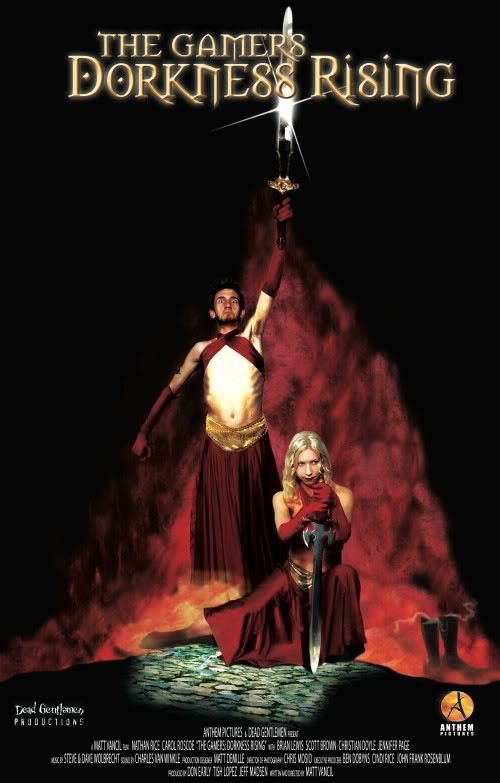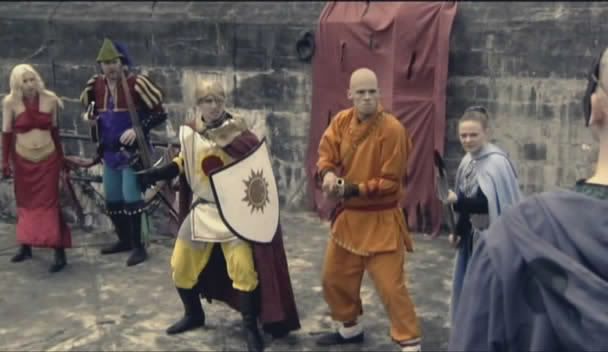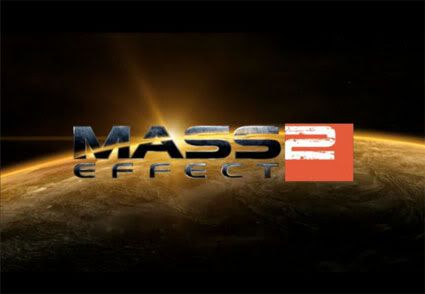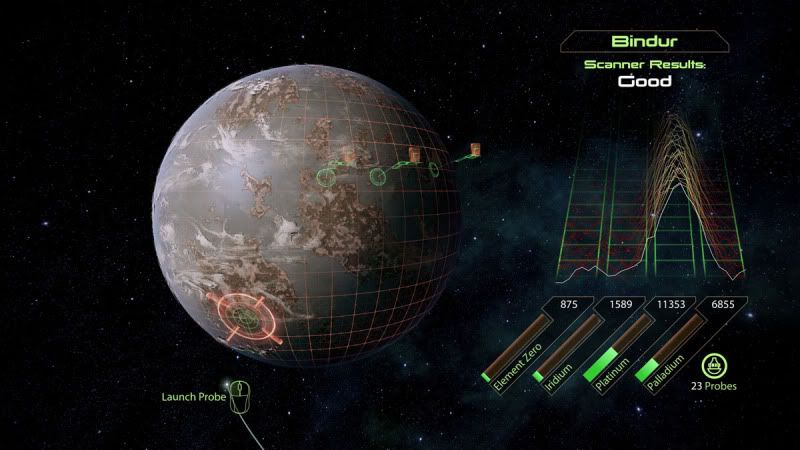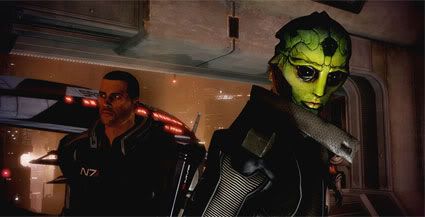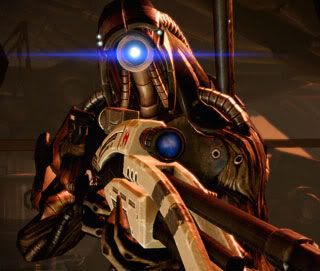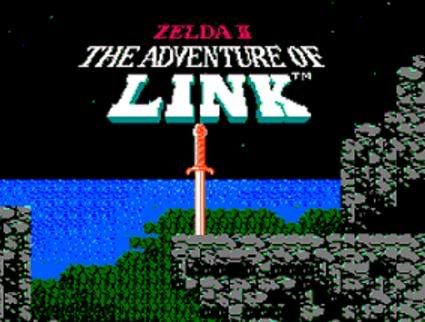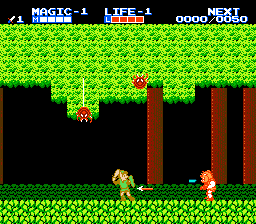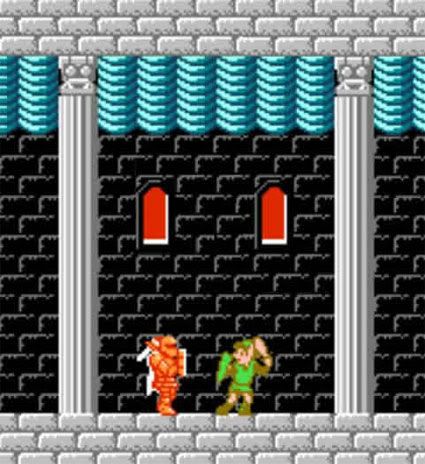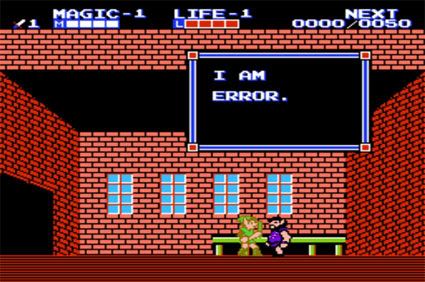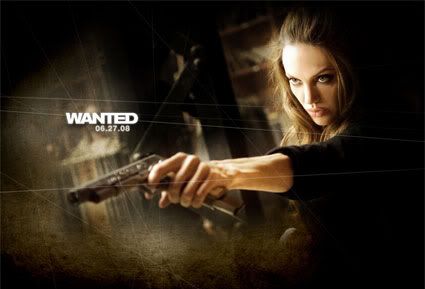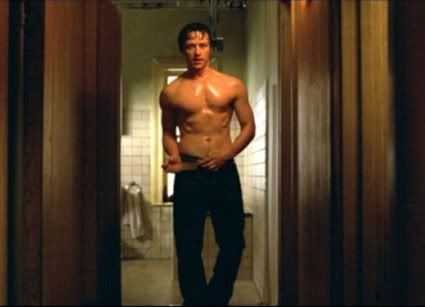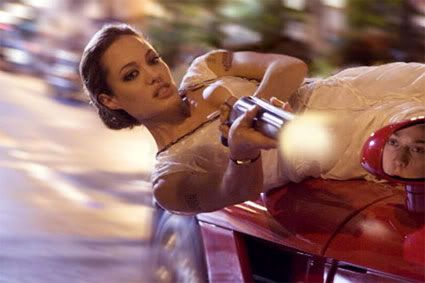This week’s IT CAME FROM NETFLIX! brought to you by a generous donation by Amanda d’Adesky. Thank you for your support!

[audio:http://www.blueinkalchemy.com/uploads/jumper.mp3]
Jumper is an existential treatise on the nature of the conjectural power of teleportation. The schizophrenic, random nature of the story is paired with a tendency towards awkward shot composition, layered with somewhat passable CGI to create an experience not unlike the one an individual would have if they did, in fact, discover they had the aforementioned power. It’s a breathtaking overarching statement on the nature of human existence that…
Wait a second, no. No, that wasn’t intentional. This flick is just a mess.
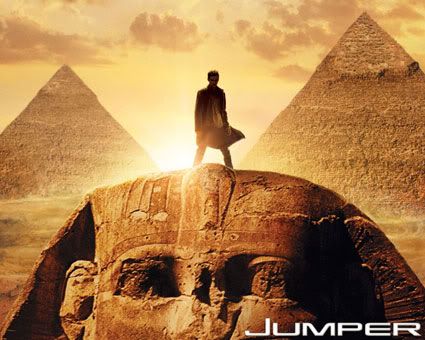
Get used to shots like this – they try to justify the whole film’s existence.
Jumper introduces us to young David Rice, a 15-year-old kid with a crush on a girl and problems with a bully. His halting attempt to chat up his would-be paramour has the bully acting the way bullies do, and David ends up under an iced-up lake staring down an early grave. He jumps – that is to say, teleports – into the local library, soaking wet and very confused. He learns to control his power and does what I think any 15-year-old would do: robs a couple of banks to pick up awesome toys and eventually settles into a swank pad. Apparently his jumping ability also gives him the power to grow up looking like Hayden Christensen. Eventually, however, the fun comes to an end when a group of quasi-religious para-governmental hunters called Paladins, lead by a white-haired Samuel L. Jackson as ‘Roland’, come looking for David. Are they mad that he’s robbing banks? Do they want to harness his power for their own ends? No – they just want him dead because “only God should have this power.”
Don’t worry, any potential religious fanaticism on the part of the Paladins or cool young adult rebellion courtesy of the Jumpers is completely undermined and utterly without teeth, since Jumper is way too busy trying to look cool. The supernatural nature of the protagonist’s ability is simply a vehicle to take the camera from one exotic location to another. Now, as a method for promoting travel, Jumper works. I wouldn’t mind seeing Rome or Egypt or Tokyo myself someday. But I wouldn’t want to go with the guy we’re supposed to be rooting for in this film.

‘Rachel, I know you might be talented, but people are here to see us make out.’
There are two problems with him. Blame for the first falls on Hayden Christensen. It could have been assumed, in the wake of the atrocious Star Wars prequels, that the portrayal of Anakin Skywalker, supposedly one of the greatest and most virtuous Jedi before his tragic fall from grace, as a selfish emotionless wooden childish dunce was less the fault of Hayden and more that of writer/director/creator/deity/nutjob George Lucas. Seeing Jumper, however, it seems that David & Anakin are completely interchangeable. Both of these characters are uninvested in the lives of others, completely without strong emotion or drive and do nothing to connect with the audience. This problem is underscored heavily within the first fucking minute of the movie with David actually narrating for us, describing his experiences rather than showing us and letting us figure it out on our own. And he calls the audience ‘chumps’. This kind of thing worked in ‘Wanted,’ but it doesn’t work here. Of course if I’d paid for a cinema ticket, I’d feel very chumpish indeed, sitting there in the dark picking metaphorical splinters out of my ear.
If I could digress for a moment: Mark Meer, voice actor for the male Shepard player character in Mass Effect has been called somewhat unemotive in comparison to his female counterpart, Jennifer Hale. The opening narration of Jumper by Christensen is so bland, wooden and lacking in life that Mark Meer’s voice acting seems downright bombastic in comparison. Interchangeable as the characters of David and Anakin might seem, though, David is clearly more of a deliberate delinquent rather than pretending to be a guardian of truth and justice, which leads us to our second problem, a problem I shall illustrate by quoting fellow critic Confused Matthew.
“Our supposed hero and protagonist is an asshole. I mean he doesn’t listen to anybody, he’s not very nice, he treats everyone around him like shit and he only ever thinks about himself!”
This is the exact same thing Matthew says about Anakin Skywalker in the second two Star Wars prequel films. He also says it about young Simba in The Lion King, but that’s neither here nor there. The point is, Hayden’s portrayal of David raises one of Jumper‘s many questions: Other than taking a little delight in agreeing that robbing a bank without chance of normal authorities catching you sounds like fun, how are we supposed to empathize with, cheer for or even like this smug, arrogant, womanizing, selfish jerkass?
Jumper‘s questions are not the kind posed by films intended to raise them during the narrative (“Who is Keyser Söze?” for example) or as a result of the narrative’s themes (“Is the HAL 9000 a computer or a living being?”). They’re problematic questions, areas of weakness in the movie’s premise, plot and pacing. Why does the Jumpers’ ability sometimes cause massive structural damage and sometimes not? Even when just jumping himself, David sometimes breaks walls or causes ceilings to collapse, and other times he just bamfs from one side of the couch to the other without so much as jostling a cushion. Also, why do Jumpers engage in short-range combat? You’d think that with the ability to teleport any distance to any location at any time, any Jumper worth their salt wouldn’t stick around long enough to get involved in a punch-up. If you had this ability – okay, if I had this ability, and a Paladin was en route to tase me into submission before gutting me like a fish, my plan would be to jump right behind him, grab him by the shoulders, jump 30000 feet straight up, let go of the Paladin and jump back to the ground. Unless parachutes are standard issue equipment for them, that Paladin’s going to have a very bad day, and even if he does have a parachute, by the time he touches down I’d be halfway around the world. The character of Griffin does get a little creative with his ability here and there, including a scene with a sports car that’s one of the few spots in the movie where I found I was enjoying myself, but for the most part the Jumpers seem incapable of directly fleeing the Paladins or dealing with them in guerrilla-style warfare. Maybe they’re just in awe at the sight of Roland’s ridiculously white hair.
Also, why the fuck was Big Ben chiming the hour when it was clearly showing only half-past?

He’s just as upset about that hairdo as I am. Seriously, guys, what the fuck?
I didn’t think Jumper could get any worse. And then, at the very end, Kristen Stewart appears. Now, it’s not her fault that the Twilight “saga” is the way it is. I didn’t get mad when I saw her, I honestly felt sorry for her. Jamie Bell & Rachel Bilson may be the standouts in this exercise in random trendy blandness, but theirs isn’t the only potential going to waste. You can almost feel Kristen’s inevitable backslide into paper-thin contrived super-stardom, and there’s something tragic about that, because when she was getting started as an actress there was potential there that I fear Stephenie Meyer might have strangled in the crib. Maybe I’m wrong and The Runaways will kick all kinds of ass. But I’m wandering off my point. Or maybe I’m jumping!
Remember Push? That film did everything Jumper does – angsty male lead, cool superpowers, exotic locales – but does it better and in a less random and confusing way. If you’re looking for something somewhat new and different in this genre, go watch Push. It’s intelligently written, directed without contrivance and the actors actually seem somewhat interested in what’s going on. Don’t watch Jumper. It’s an ill-conceived, poorly-executed mess. It adds nothing to the superpower action genre other than more evidence that Hayden Christensen is half Ent. The writing is poor, the acting is sub-par, the special effects induce yawns instead of excitement and the whole thing feels like a very cynical dollop of bland, generic action to placate the masses. At least when I play Halo, my hands occasionally tense up from holding down the fire button as I march Master Chief invincibly into incoming fire, which reminds me that I’m involved in something that’s supposed to be entertaining. Jumper requires nothing from the viewer, promises nothing and delivers nothing. It’s pretty much a waste of time, and if you were to jump anywhere, it should be far, far away from this movie.
Josh Loomis can’t always make it to the local megaplex, and thus must turn to alternative forms of cinematic entertainment. There might not be overpriced soda pop & over-buttered popcorn, and it’s unclear if this week’s film came in the mail or was delivered via the dark & mysterious tubes of the Internet. Only one thing is certain… IT CAME FROM NETFLIX.

